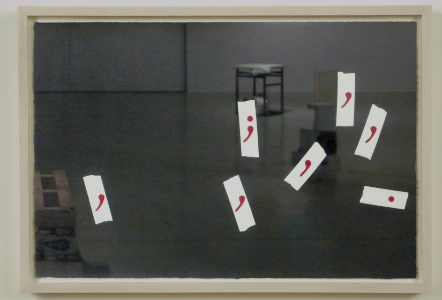Janice Gurney

In what way did your experience at The Department of Visual Arts at Western impact you & your career path?
My experience at Western gave me the time to focus on my work in a way that would not have happened without the structure of the Ph.D. program. I read much more widely than I would have on my own. Many of the readings were important in pushing me toward a more complex understanding of the history of various art philosophies.
In 2015, I put together a panel presentation, “In and Out of History: Appropriation in Canadian and American Art”, for This is Paradise: Art and Artists in Toronto, a conference at the University of Toronto. I am continuing to work out some of this thinking in writing about the practice of Appropriation in Toronto art.
How have you been contributing to your community following your experience at Western?
I had exhibitions at Wynick/Tuck Gallery in Toronto, at the AGYU Gallery at York University and at Theilsen Gallery in London that included some of the work I was making while still in the Ph.D. program.
Since the completion of my Ph.D. studies, I have had solo exhibitions that included more of the works made during my time at Western. They took place at Birch Contemporary in Toronto and the McIntosh Gallery and the D.B. Weldon Library at Western. In March 2017, some of this work will be in Dar’a/Full Circle, a group show curated by London artist Jamelie Hassan at Artcite Inc. in Windsor, Ontario.
Can you think back and share a memorable moment from your time here at Visual Arts?
Many memorable moments happened during talks with my thesis committee, made up of David Merritt, Patrick
What was the most important thing you learned during your time here?
The time that I had to think and read served to clarify the reasons behind why it is is so important for me to make connections and alliances with other times and other people in my own artwork. My research into Actor-Network-Theory gave me ways to think and talk about how different components from different times, people, and places could come together to create new meanings in a new context.
What is something you are passionate about? What are you working on right now?
I am continuing to work in various ways with meditations from Marcus Aurelius. I have another research trip planned for Rome and Florence this spring. I have been working on a hand-made book that spells out a meditation using photographs of letters taken from the gravestones in the Protestant Cemetery in Rome. I am working with a bookbinder in Florence where I will have the books printed and bound.
Why do you think a career in the Visual Arts is important/valuable?
I think there has to be strong personal belief in the importance of art that drives someone to continue to make art, not as a career choice, although it often turns into a way to make a living, but as a way to make some contribution to the culture of your country, and in a larger sense, to the idea that art is a way to understand how we exist in this world.
What would your hopes be for the next 50 years of Visual Arts at Western?
It is very difficult to envision what needs to happen 50 years from now. I hope Visual Arts will get a bump in their budget so that they can bring in more visiting artists and expand the number of both part-time and full-time faculty positions. There are some benefits to having a small faculty but, in the long term, people get burned out having to take on so many roles within the school.






